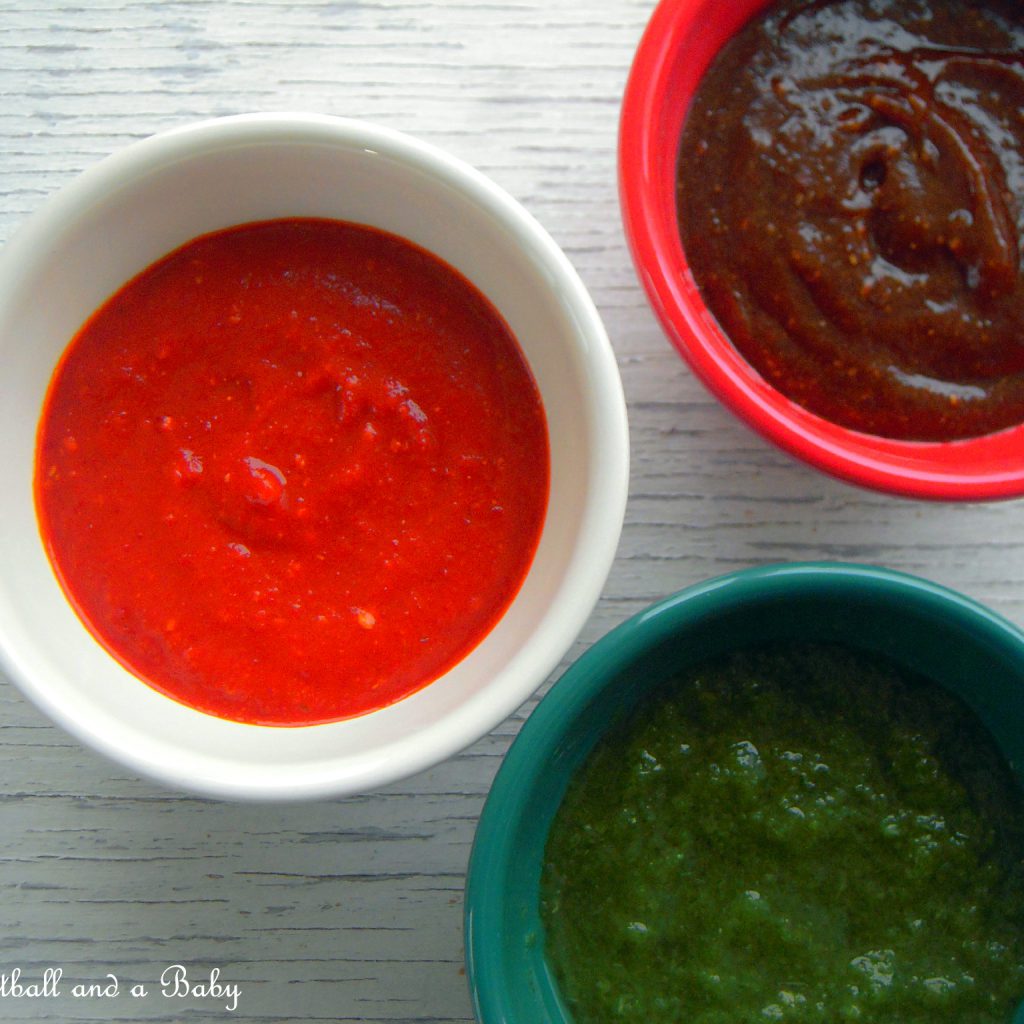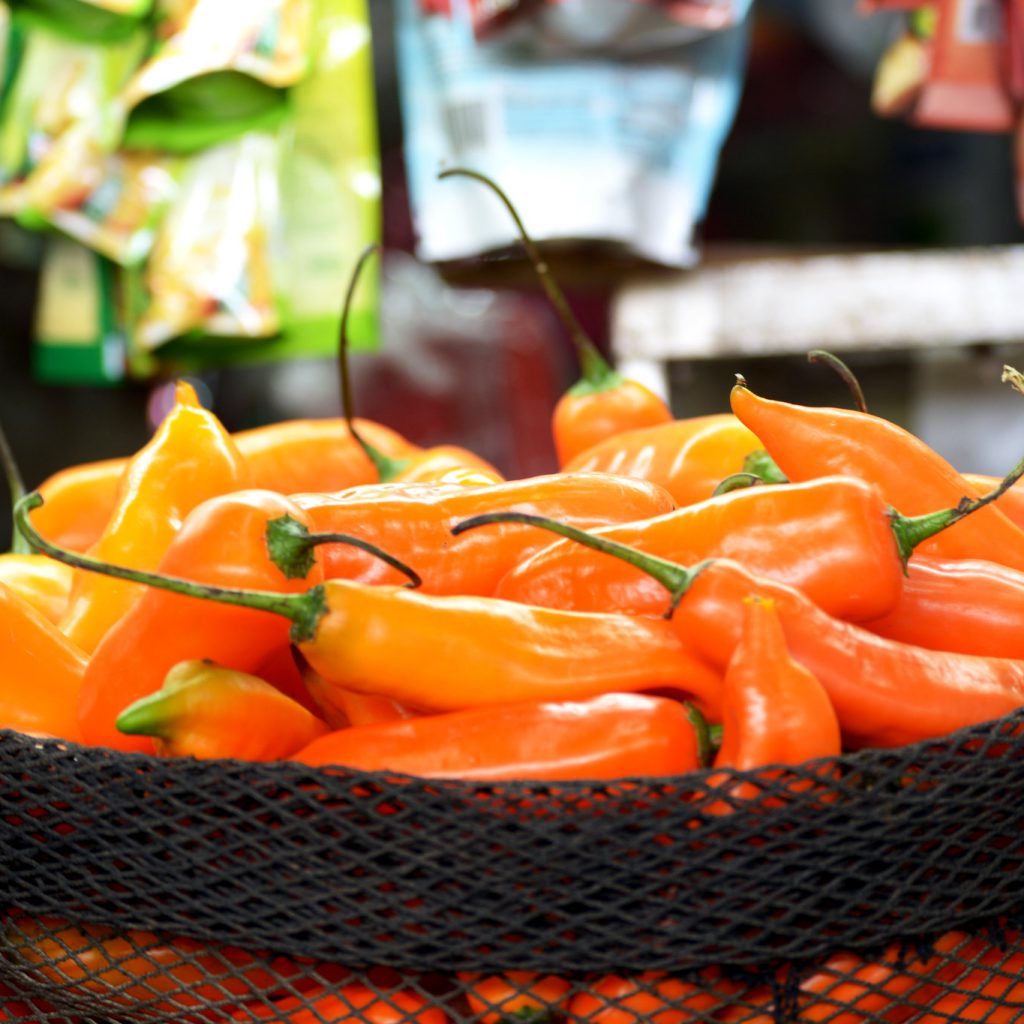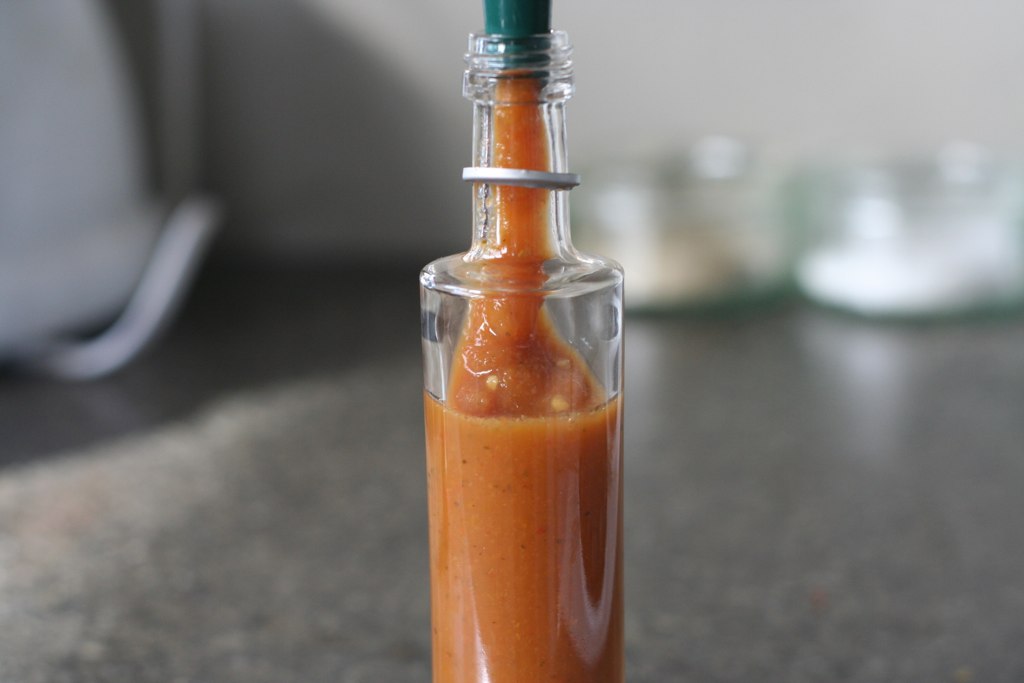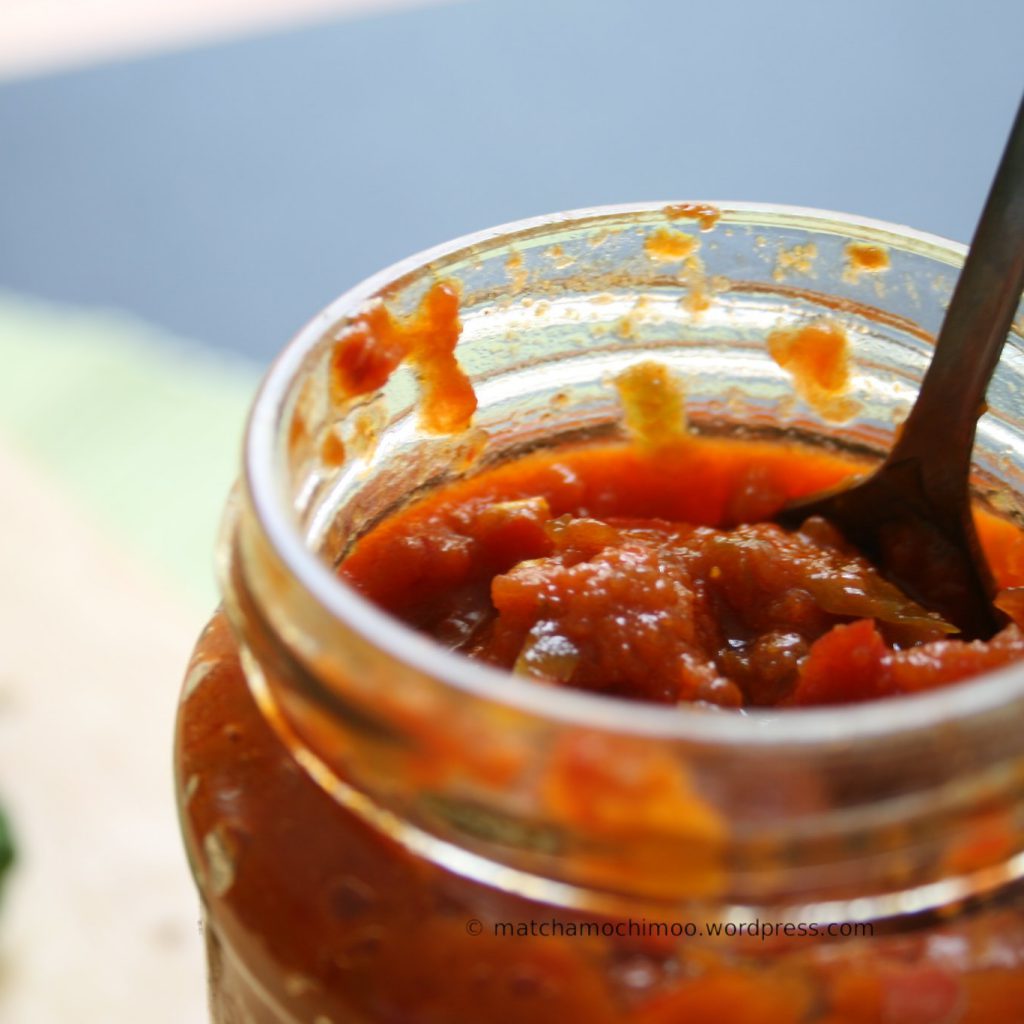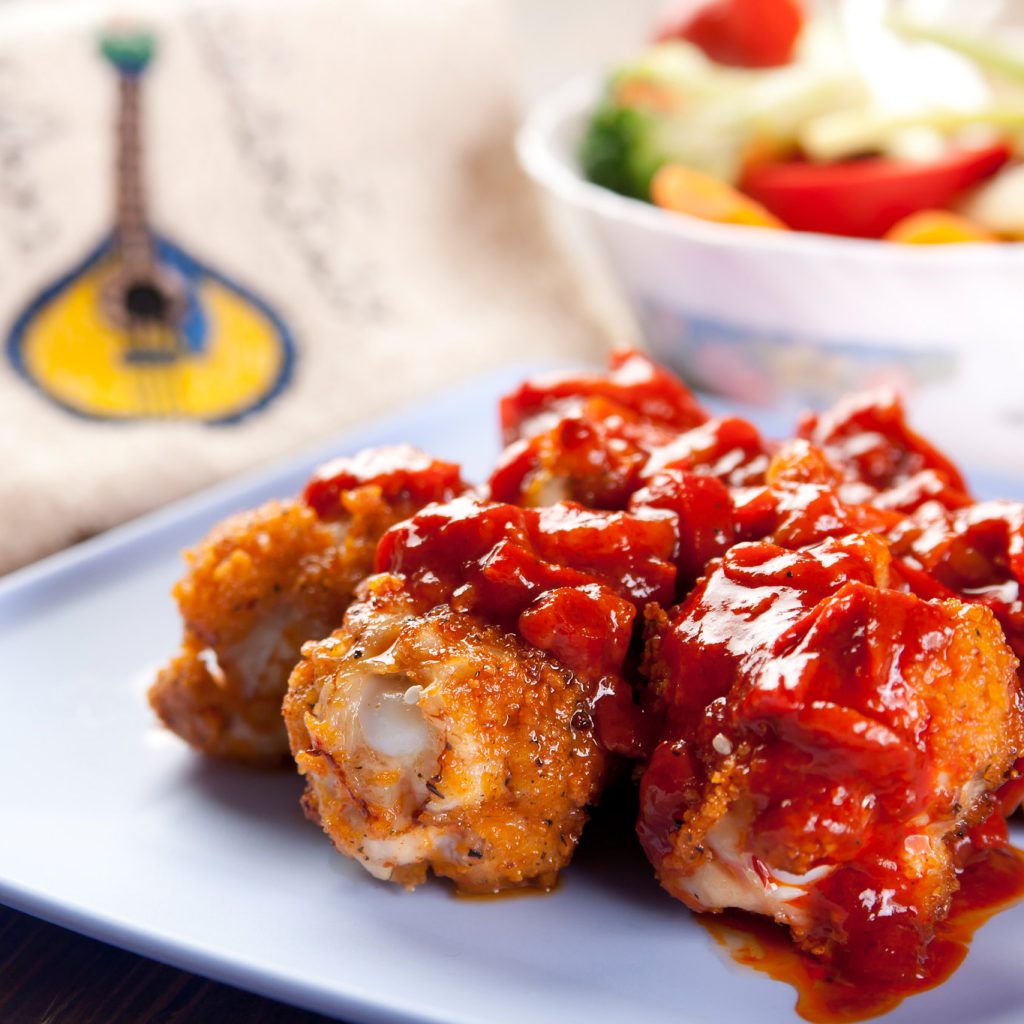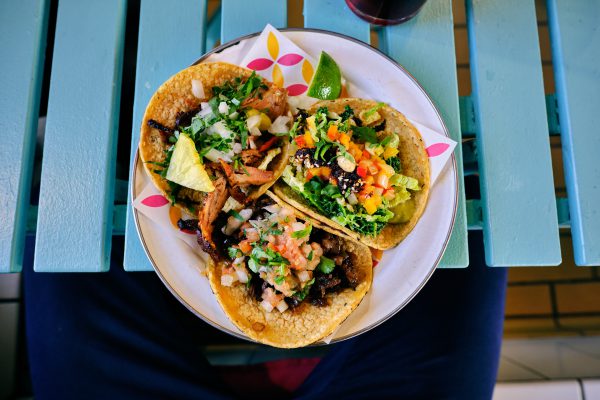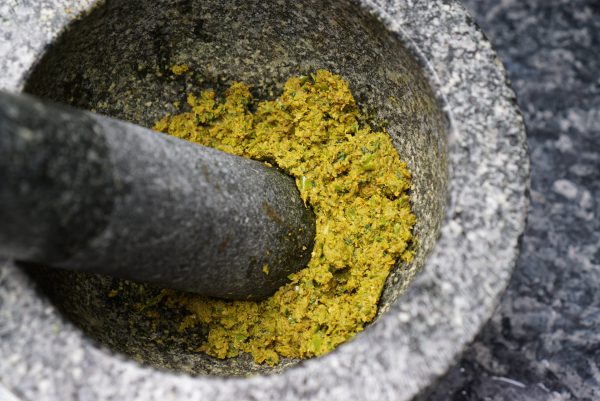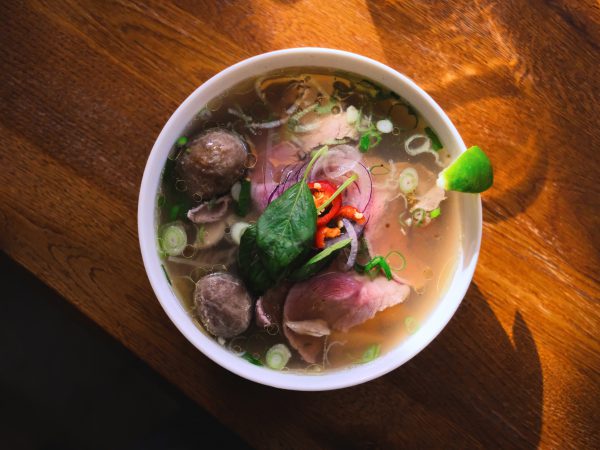Last Updated on May 18, 2023
It’s funny how we like to spice things up by adding those tear-inducing, sinus-clearing condiments to our food. Even though the plant is native to Central America, today, chili peppers seem to be everywhere, from Columbia to China.
Let’s talk about the sweet and spicy chili sauces around the world. We’ll also share easy recipes, so you never run out of a bottle of funky, homemade chili sauce. But first, let’s pay our tribute to chili peppers that make this culinary experience possible by exploring both the chemical compounds that make this bitter love possible and the health benefits we can derive from them.
Why Do Chili Peppers Burn?
The main chemical component of hot peppers is capsaicin, developed long ago as a form of defense mechanism that protects the plant’s seeds, which is why they’re also the hottest part of a pepper.
One thing about capsaicin is that it repels insects and fungus, which makes it last longer than other vegetables and fruits — a golden feature for a hunter-gatherer. They make every dish more flavor interesting by adding a fiery kick.
Chili peppers also make you salivate, which in turn breaks down starchy foods like bread, rice, and potatoes. This is why peppers are commonly combined with these foods to ease their digestion.
And lastly — as counterintuitive as it sounds — research shows that chili peppers also work as a pain reliever for muscles, joints, and even painful nerves.
The Key Health Benefits of Chili Pepper
Chili peppers smell amazing, have an amazing kick, and they pick you up. According to
Maricel E. Presilla, the author of the book Peppers of the Americas: The Remarkable Capsicums That Forever Changed Flavor, chili peppers can modulate blood insulin spikes after meals — super helpful for people with diabetes — and increase our body temperature temporarily, which might mean an increase in the metabolic rate.
Unsurprisingly, peppers are full of good nutrients like vitamins A, B, C, and K, potassium, folic acid, fibers, and antioxidants. There is also a lot of research on capsaicin, the natural chemical present in the chili family, suggesting that it makes us release happy hormones like serotonin.
However, this doesn’t necessarily mean you need to take capsaicinoid supplements since there’s still a lot to discover about its long-term effects on our health, but you can use chili peppers moderately in your cooking as they add super interesting flavors to your dishes, and welcome the possible health benefits as bonuses. Plus, imagine combining that with something sweet like the sugar in a chili sauce, and you’ve got yourself a magic potion.
Long story short, if you’re the type who knows how to say spicy, please, in nine languages and like your hot sauces even better when they are balanced/countered with a sweet kick, we made a list just for you! Here are the top 10 sweet chili sauce recipes from around the world, from the US and Latin America to South East Asia and even down under in Australia.
The 10 Best Chili Sauce Recipes
1. Sriracha – Thailand and Vietnam
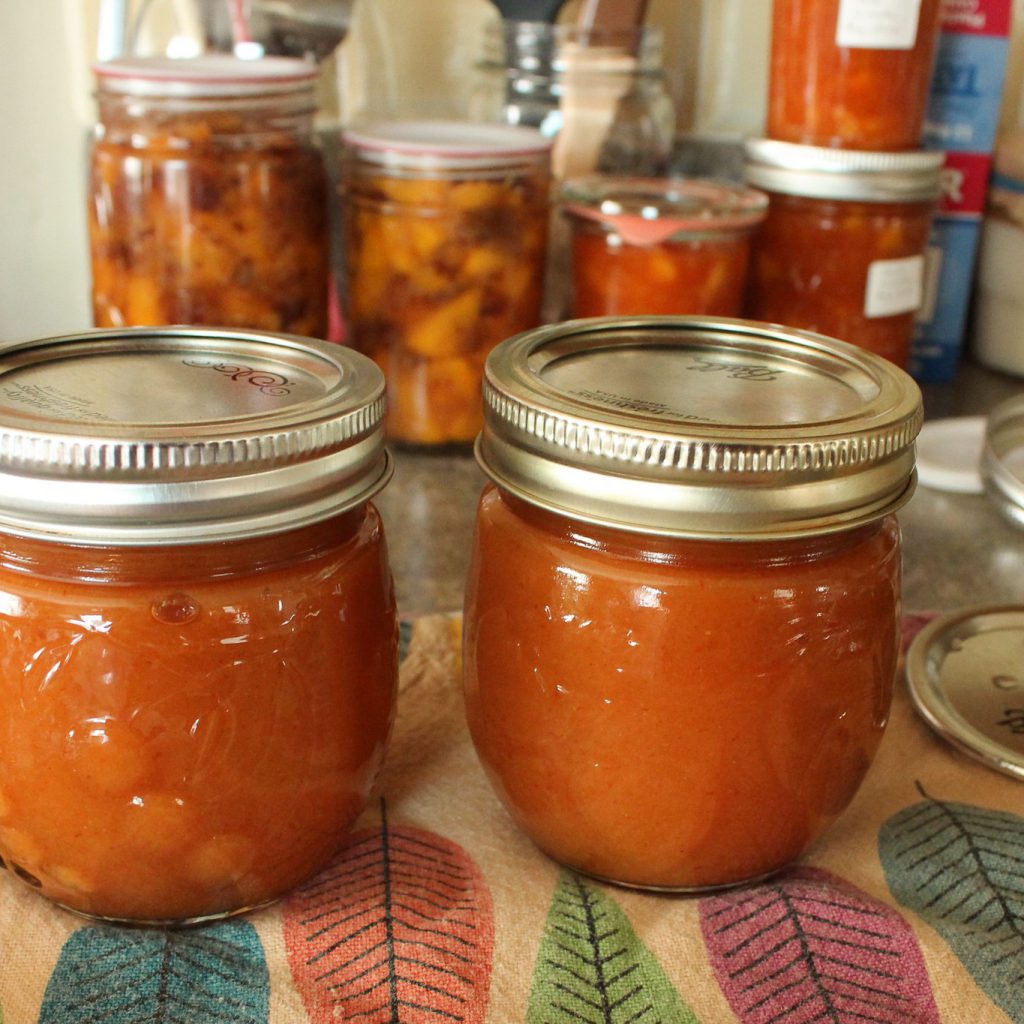
By rcakewalk
Sriracha — or rooster sauce, thanks to the rooster logo of the Huy Fong Foods brand that made the sauce popular worldwide — is originally from Southeast Asian cuisine. The sauce combines chili peppers, jalapeno, other spices and aromatics, and the tangy power of fermentation, enhanced with some sugar.
Sriracha is not the hottest sauce out there — it’s classified as mildly spicy, at around 2,200 Scoville rating — but it’s definitely one of the most delicious sweet-and-spicy sauces out there. You can use it as a condiment on burgers and french fries or even as a sushi topping.
Prep time: 30 mins (+3 days to settle)
Yield: 1 ½ cups
Ingredients:
- 250 g red serrano peppers
- 500 g red jalapeno peppers
- 100 ml water
- 50 g light brown sugar
- 4 cloves of garlic
- 120 ml distilled white vinegar
- 1 tbsp salt
Preparation:
- Cut off the stems of the serrano and jalapeno peppers. Deseed them if you like milder heat, or leave the seeds on for a hotter sauce.
- Toss the peppers, water, brown sugar, garlic, and salt into a food processor. Pulse several times, then blend until you get a smooth paste. If you’re not short on time, use a granite mortar and pestle for a much stronger aroma. Make sure to save the vinegar for last to ensure the fermentation bacteria do their job properly.
- Pour the paste into a glass jar, cover the lid and place it in a dark, cool spot for 3 to 6 days. You’ll need to stir and scrape down the sides once a day. Soon you’ll see bubbles in the mixture, which means the fermentation is going right. Continue until the whole mixture gets bubbly.
- After a few days of fermentation, transfer the mixture back into a food processor. Add vinegar and mix.
- Use a mesh to strain the mixture into a saucepan. Push the chunks through the strainer as much as you can.
- Bring the mixture to a boil over medium heat by stirring. Simmer until the sauce thickens to your desired consistency, which should take about 10 minutes.
- Let it cool at room temperature. It’ll thicken up a little more when it cools down.
- Transfer the sriracha into a bottle or a jar and store it in the refrigerator.
2. Tamarind Chutney – India
When it comes to spicy food, Indian cuisine is one of the superstars in the world. When you cook Indian food at home, regular hot sauces might kill off the curry’s vibe. You’d have to sacrifice the complete Indian experience, as the intensity of the food usually requires a potency with subtle nuances that only an authentic Indian sweet-and-spicy sauce can produce.
One such popular sauce is tamarind chutney, a type of Indian dip frequently consumed with popular Indian street food like chaat. Chutneys are made in a wide variety of taste profiles and textures, incorporating different herbs, fruits, aromatics, and spices.
Tamarind chutney is a sweet chili sauce of smooth brownish color, popularly served with snacks like samosa, golgappa, pani puri, or pakora. Tamarind is a tangy and tart fruit native to South Asia and Africa. Here’s an easy recipe for you to follow along and intensify your Indian dinner nights.
Prep time: 30 mins (+3 days to settle)
Yield: 1 ½ cups
Ingredients:
- 50 g deseeded tamarind
- 100 g pitted dates
- 100 g jaggery
- 1 tsp red chili powder
- 3 cup water
- ½ tsp ground coriander
- ½ tsp ground roasted fennel seeds
- ½ tsp ginger powder
- ½ tsp ground jeera
- ½ tsp kala namak
Preparation:
Tip: To make the best of all these spices, get them whole and grind them fresh using a granite mortar and pestle.
- Mix the tamarinds, dates, jaggery, and chili powder in a large metal mixing bowl. Add 2 cups of water and place the mixing bowl in a pressure cooker over a rack or trivet. Add 1 cup water to the pressure cooker and close the lid. Cook on medium heat for about 30 minutes.
- Once you’re done cooking, let the cooker cool down and release the pressure by itself. In the meantime, mix ground coriander, ground roasted fennel seeds, ginger powder, ground jeera, and kala namak in another mixing bowl.
- By then, the dates and tamarind will be completely softened, so you can pass the mixture through a mesh strainer. If there are some chunks left, transfer them into a granite mortar and mash lightly.
- Add water until your tamarind chutney reaches your desired consistency. You can have it as a sauce or at the consistency of a spread.
- Transfer into a clear jar or bottle and store in the refrigerator.
3. Chogochujang – South Korea
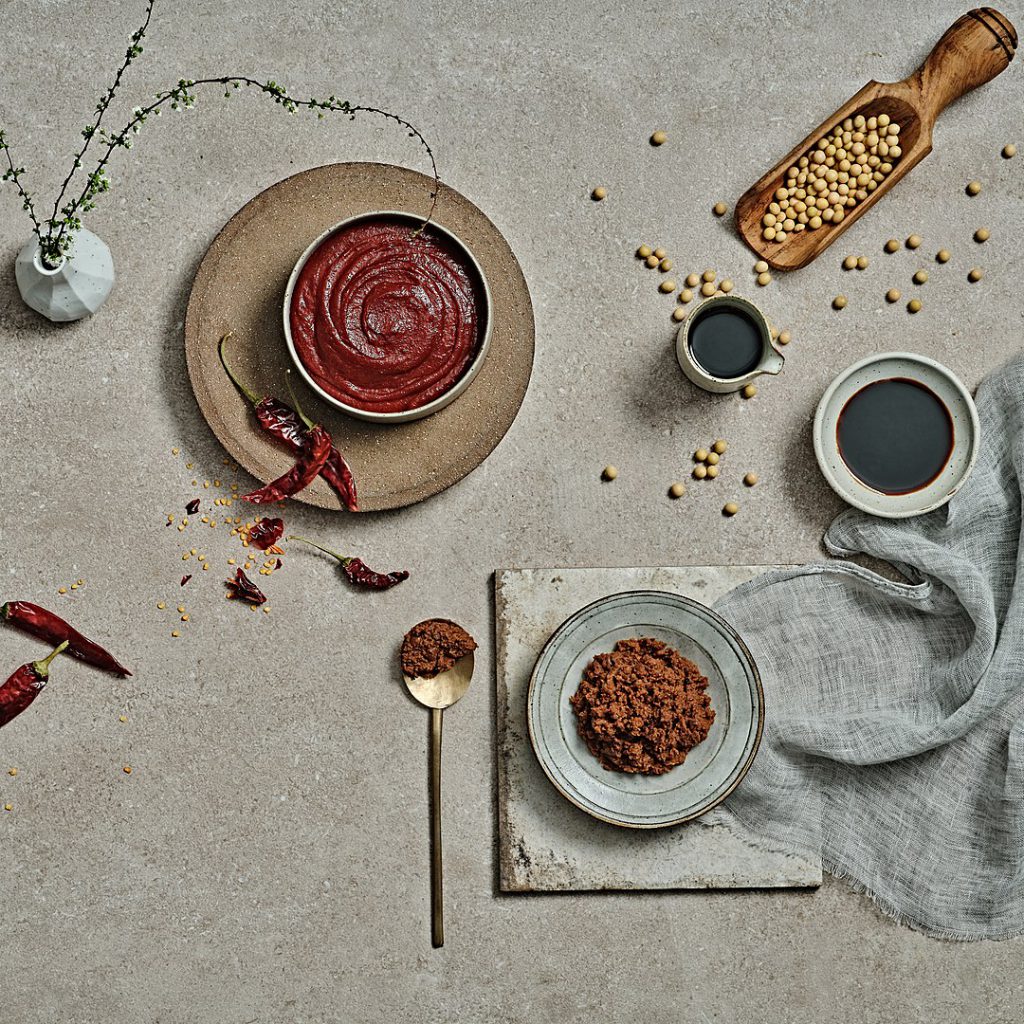
By Sadopaul
Chogochujang, sometimes shortened as chojang, is a very popular sauce in South Korea, so much so that you can see it on every table at a gourmet restaurant, at the cupbap stall on the streets, and in every household pantry. It’s a well-balanced sauce with a slightly sweet touch and a beautiful kick of mild spice. The base of the sauce comes from gochujang, a really potent fermented chili powder paste, malt, sticky rice, and fermented soybean powder.
However, the bad news is that you can’t quickly mix up a batch of gochujang to delight your guests for dinner, as the mixture needs to ferment for at least six months. Even Koreans buy this paste from the store as it’s easily available, so we suggest you do too. Head to a Korean (or Chinese or Vietnamese) store and get yourself a batch of gochujang. You can add this tangy, sweet, and spicy sauce to your fried rice or even pasta. It’s also a great topping for avocado toast and works wonders as a salad dressing.
Prep time: 5 mins
Yield: 1 cup
Ingredients:
- 5 tbsp gochujang
- 2 tbsp honey
- 1 tbsp sugar
- 2 tbsp minced garlic
- 3 tbsp rice wine vinegar (or apple cider vinegar)
- 1tsp sesame oil
Preparation:
- Mix all the gochujang, honey, sugar, minced garlic, vinegar, and sesame oil in a small mixing bowl
Tip 1: Use maple syrup instead of honey for a vegan version.
Tip 2: It’s okay to use apple cider vinegar if you can’t find rice wine vinegar.
- Mix with a whisk or a fork.
- If the mixture is too thick, slowly add tepid water while mixing.
- Store in the refrigerator for up to a week.
4. Aji Amarillo – Peru
The spicy, creamy, and fruity aji amarillo sauce is a staple in Peruvian cuisine. It’s made of fresh jalapenos and fresh, vibrant amarillo peppers with a golden yellow hue. The people of Peru have been preparing it since the Incan times, which makes it a must-try on your future visit.
The sauce also contains cilantro, peanuts, mustard, oregano, oil, and cumin, as well as lime juice and sour cream or mayonnaise — the most traditional versions don’t include mayo, but the creaminess it adds is quite delectable.
Aji amarillo is a bomb, and one of the key ingredients in landmark dishes like ceviche, causa rellena, and papa a la huancaina. Thanks to its mild heat and different fruity and nutty tones, you can use aji amarillo as a condiment to accompany your french fries, hamburger, fried rice, or stir-fries, or even as a dressing for your salads.
Prep time: 30 mins
Yield: 2 cups
Ingredients:
- 50 g aji amarillo peppers
- 2 tbsp extra virgin olive oil
- 1 tbsp mustard
- 60 ml white vinegar
- 60 ml sour cream
- 1 clove of garlic
- 1 bay leaf
- 1tsp salt
Preparation:
Tip: Use gloves and a mask to protect yourself from the spicy aji amarillo peppers for this step. Even though you’re wearing gloves, don’t touch the seeds with your fingers. Use a spoon instead.
- Cut the stems of the peppers and discard them. Then cut the peppers lengthwise and remove the seeds with the help of a teaspoon and discard the seeds too. Finally, chop the peppers into quarters.
- Rest the aji amarillo peppers in a bowl of water for 5 minutes.
- Add extra virgin olive oil in a small skillet and heat it up over medium heat. Add garlic, peppers, and bay leaf and stir fry them for about 5 minutes.
- When the ingredients start to turn golden, take the skillet off the heat and let it rest. Discard the bay leaf.
- Get a food processor and add the aji amarillo peppers, mustard, garlic, vinegar, and sour cream. Blend for 3 to 5 minutes until you get a homogeneous mixture.
- Add salt and pepper to taste and pulse a few times more.
- Transfer the sauce to a clean dry jar and store it in the refrigerator.
5. Chamoy – Mexico
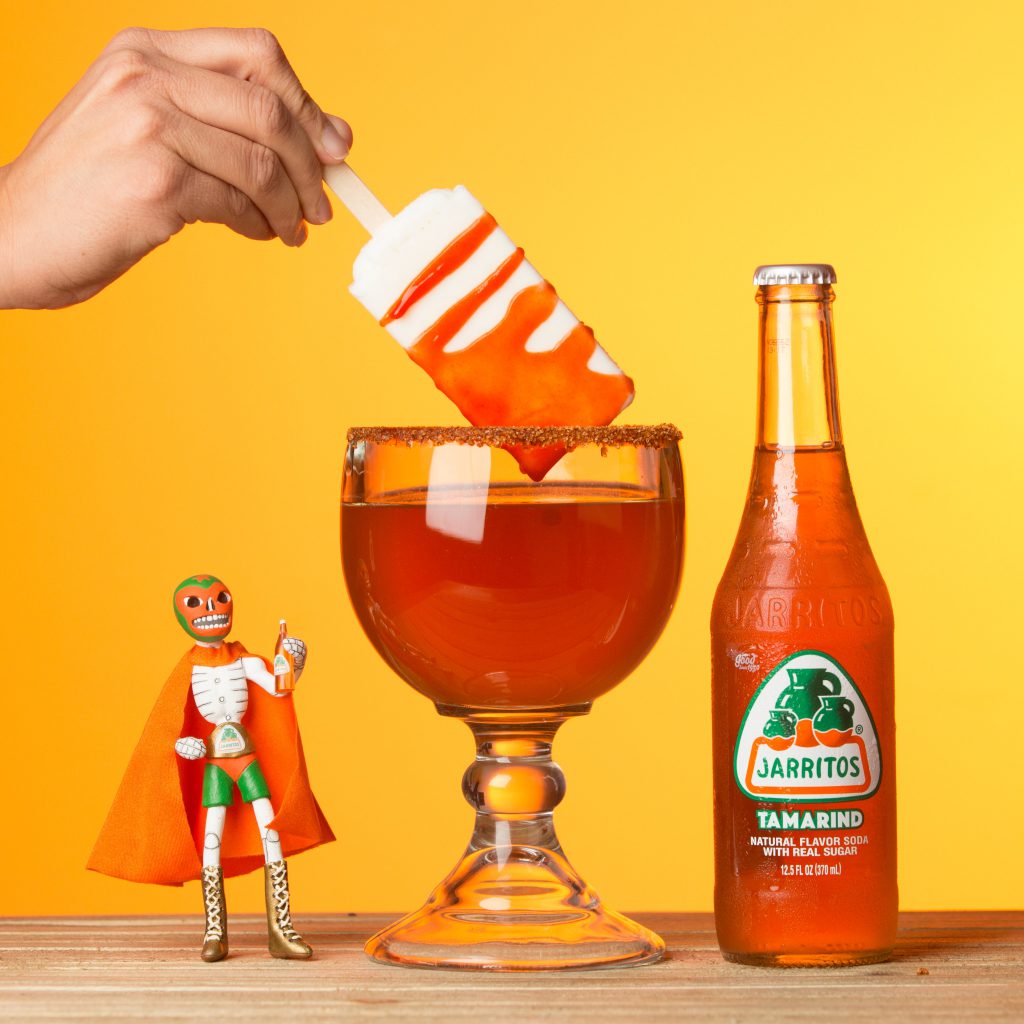
Mexicans like to drizzle chamoy with all sorts of unexpected stuff, from street food to candy. The sauce can be made of a combination of dried apricots, avocados, prunes, dried roselle flowers, sugar, chili powder, and some sort of acid. The resulting sauce is tangy, fruity, earthy, sweet, and spicy. Everything you can expect from a condiment, and more.
Although it’s closely associated with Mexican food, chamoy isn’t only popular in Mexico. If you go to Los Angeles, Texas, or any other place where Mexican street food presence is strong, you’ll notice that it’s hard not to see this condiment on the street and in restaurants.
Chamoy owes its popularity to its endless versatility. You can even drizzle it over your favorite fruits and raw vegetables like pineapple, mango, watermelon, cucumber, and jicama. It’s also a delicious rim paste for beer and cocktails.
Prep time: 40 mins
Yield: 4 cups
Ingredients:
- 1 cup dried apricots
- ½ cup seeded prunes
- ½ cup dried hibiscus flowers
- 6 tbsp chili powder
- 3 cup water
- 50g sugar
- 60 ml fresh lime juice
Preparation:
- Take a medium saucepan and add all the ingredients except the lime juice.
- Bring the saucepan to a boil and simmer for about 30 minutes on low heat.
- Turn the heat off and let the mixture rest at room temperature for about 15 minutes.
- Transfer the mixture to a molcajete or a blender, add the lime juice, and blend until smooth.
- You can play with the consistency by adding more water at this stage.
- Transfer into a clean, dry bottle or jar and store in the refrigerator for up to 2 months.
6. Scotch Bonnet Pepper Sauce – Jamaica
Scotch bonnet pepper sauce has a vibrant orange hue and is slightly sweet with a spicy kick and a hint of peach, which enhances any meal it’s drizzled on. That’s why the sauce is a key part of many Jamaican — and other Caribbean — dishes.
The scotch bonnet peppers are known for their searing level of heat, about ten times hotter than your average jalapeno — up to 350,000 Scoville rating! To level off the insane spiciness of the sauce, fruits like mango and avocado are often added to the mixture, promising a fruity flavor, while your jaw drops and you look for a glass of milk to ease the heat.
Feel free to use scotch bonnet pepper sauce to season meat, fish, and poultry and coat deep-fried foods, or use it as a marinade, a finishing sauce, or a condiment if you’re a spicy daredevil.
Prep time: 45 mins
Yield: 5 cups
Ingredients:
- 18 fresh scotch bonnet peppers
- 6 fresh jalapeno peppers
- 1 small onion
- 6 cloves of garlic
- 1tsp olive oil
- 2 tbsp white sugar
- 1 mango
- 2 cup water
- 60 ml distilled white vinegar
Preparation:
Tip 1: Use a pair of gloves and a mask when you’re handling the peppers. Don’t touch the seeds with your fingers. Remember, they are one of the hottest peppers in the world.
Tip 2: Leave the seeds in for an even spicier sauce.
- Deseed the peppers with the help of a knife and a teaspoon. Cut them into quarters.
- Add a teaspoon of olive oil to a saucepan. Heat it up and toss the peppers, garlic, onion, chopped mango, and salt to taste. Cook for about 5 minutes, stirring frequently.
- When the ingredients start to turn golden, add the water. Bring the saucepan to a simmer and cook for about 20 minutes or until the peppers are soft.
- Remove the saucepan from the heat and leave it to rest at room temperature until it cools down.
- Transfer the mixture to a blender and blend until thoroughly mixed and smooth.
- Add the vinegar and sugar and mix some more.
- Transfer the mixture into a clean, dry bottle or jar and store it in the refrigerator for up to 6 months.
7. Harissa – North Africa
Although there are numerous variations in the region — and a spice blend with the same name — harissa, in its simplest version, is a paste of hot, dried red peppers mixed with spices and oil. The word derives from the Arabic verb harasa, which literally means to crush.
The sauce makes an appearance in numerous North African recipes, such as tagine stews and roasted meats. It’s used to season almost anything, from couscous to typical grilled meats, pasta, and vegetables. In our humble opinion, it’s a fantastic condiment for anything grilled. Harissa is very easy to make at home and keeps perfectly in the fridge.
You can use harissa to brighten up any roasted meat, vegetable, or baked tuber. It’s just like the famous Canarian mojo sauce, but sweeter and fierier.
Prep time: 50 mins
Yield: 2 cups
Ingredients:
- 1 red bell pepper
- 1 small red onion
- 3 garlic cloves
- 1 tbsp tomato paste
- 3 fresh or canned red chili peppers
- 6 tbsp extra virgin olive oil
- Juice of half a lemon
- 1 tsp sweet paprika
- 1 tsp whole caraway
- 1 tsp whole cumin
- 1 tsp whole coriander
- Salt and pepper to taste
Preparation:
- Put the cumin, caraway, and coriander in a skillet and toast them until you can smell their scents in the air.
- Transfer the toasted spices into a spice grinder or a mortar and pestle and grind them.
- Toast the red bell pepper in the oven at 190 C for about 30 minutes, until the flesh softens and the skin is toasted.
- Place the pepper in an airtight container or a plastic bag and leave it to cool down. Letting the roasted pepper sweat in a container helps its skin to come off.
- Remove the skin, the stem, and the seeds.
- Chop the red onion into small cubes, add a little olive oil to a skillet, and cook the onions until soft. Add the sliced garlic to the skillet and give it a few tosses.
- Remove the seeds of the chili peppers using a pair of gloves and a teaspoon.
- Add all the ingredients in a food processor and blend until you get a thick paste.
- Transfer into a clean, dry jar and cover it with olive oil for a longer shelf life.
8. Piri piri – Portugal
The piri piri sauce made of homonymous piri piri peppers might be an Angolan or Portuguese invention. Or it might have been born in Mozambique too. The important thing is that it is very rich and admits many variations.
Piri piri, pili pili, peli peli, or peri peri are some of the names used in Portuguese and in several African languages for this hot sauce and the type of chili. The piri piri pepper is of American origin, small, red, in the shape of a slanted eye, and ten times hotter than the jalapeño.
In the 16th century, the Portuguese settlers began exporting the piri piri pepper from America to Europe, Africa, and Asia, where they cultivated it. Such was the diaspora of this pepper that today, the origin of the sauce remains unknown.
Piri piri, the mythical sauce — and dish — popular in Portugal, Columbia, and Africa, has many folk tales regarding its origin. There are also dozens of stories about how it‘s made. In the most common recipe, fresh or dried chili peppers are macerated with garlic, oil, lemon, lime, wine vinegar, and even whisky, brandy, cognac, or port.
Some recipes call for adding onion, ginger, coriander seeds, bay leaves, oregano, thyme, or tarragon, as well as seasonings, peppercorns, ground pepper, and various types of paprika. Some people also include raw or roasted tomato and red pepper to soften the hot spices.
This, in turn, results in piri piri’s appearance and consistency being unique in every kitchen, ranging from a cooked, mashed orange sauce with a creamy texture to a macerated chili oil resembling that you see in Italian pizzerias.
Prep time: 45 mins
Yield: 1 cup
Ingredients:
- 2 tbsp dried piri piri peppers
- 2 cloves of garlic
- 2 bay leaves
- 1 tsp smoked paprika
- 1 tsp oregano
- 50 ml lemon juice
- 150 ml olive oil
- Freshly ground black pepper
Preparation:
- Peel the garlic and crush it.
- Cut the bay leaves in half.
- Add all the ingredients to a glass jar with a lid, close it well, and shake vigorously.
- Leave the macerate in the fridge for 2 weeks, shaking the jar occasionally.
- Shake the bottle before every use.
9. Hot Chili Barbeque Sauce – Texas
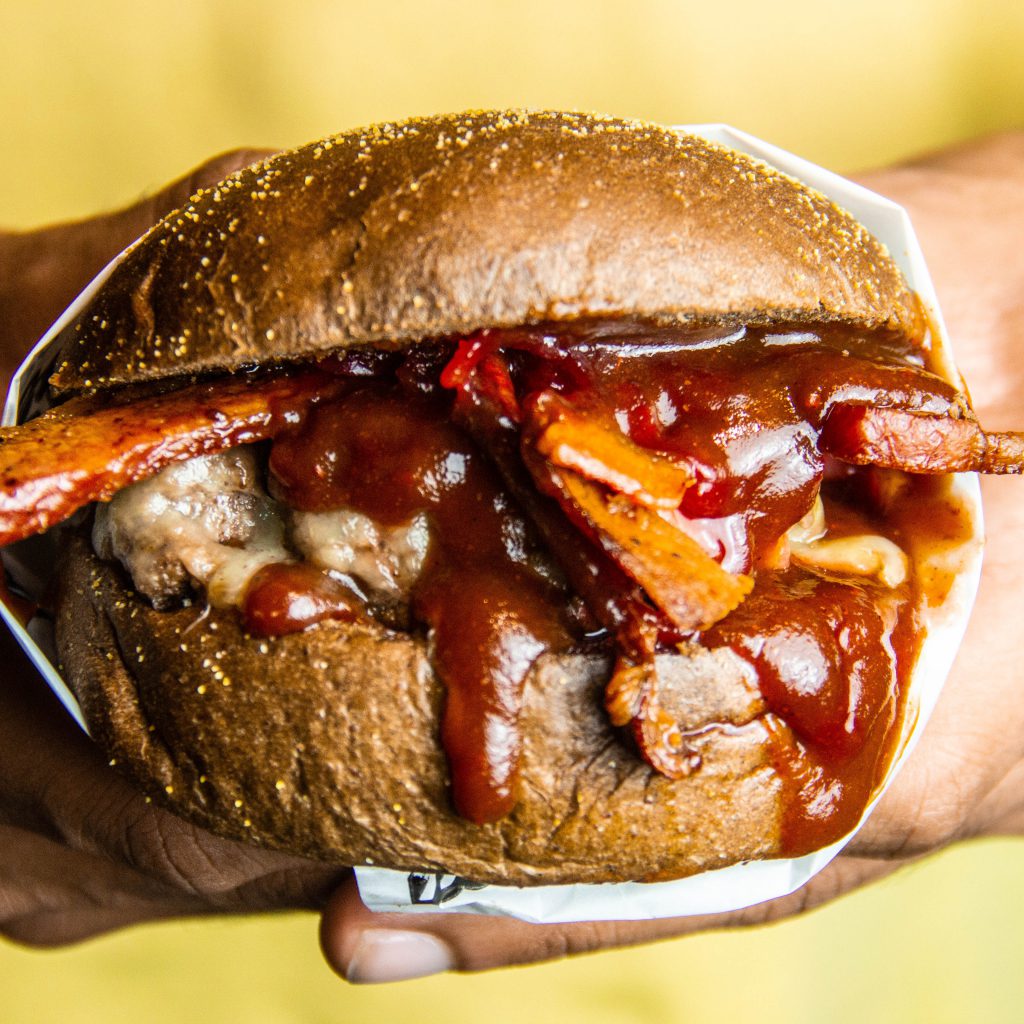
Many regions in the US claim to have the best barbecue around the country, but only one of them truly rises above all the others: Texas. Barbecue in Texas is a big deal and what the folks pour over their roasted briskets differs throughout the region – from plain salt and pepper to thick gravies.
Some will tell you that traditional Texas barbecue doesn’t need a sauce on top of it. It’s true that while the rest of the States are busy whipping up sauces, most Texans tend to eschew them. But this doesn’t mean they never come up with a barbeque sauce. In fact, they do quite often. And when that happens, no matter what the recipe is, the flavor of the barbecue sauces in Texas is always big and bold, just like the State itself.
Here is a recipe for a Texan hot chili barbeque sauce.
Prep time: 15 mins
Yield: 2 cups
Ingredients:
- ½ cup apple cider vinegar
- ½ cup tomato paste
- 1 cup ketchup
- ½ cup water
- ½ cup sugar
- 2 tbsp Worcestershire sauce
- 1 tsp ground cumin
- 1 tbsp chili powder
- ½ tsp cayenne pepper
Preparation:
- Mix the vinegar, tomato paste, ketchup, water, sugar, Worcestershire sauce, cumin, chili powder, and cayenne pepper in a small saucepan over low heat.
- Once the mixture starts to simmer, turn off the heat and leave the saucepan to cool off at room temperature. Salt to taste.
- Transfer the sauce to a clean and dry bottle or jar and store in the refrigerator for up to 10 days.
10. Chiu Chow Chili Sauce – China
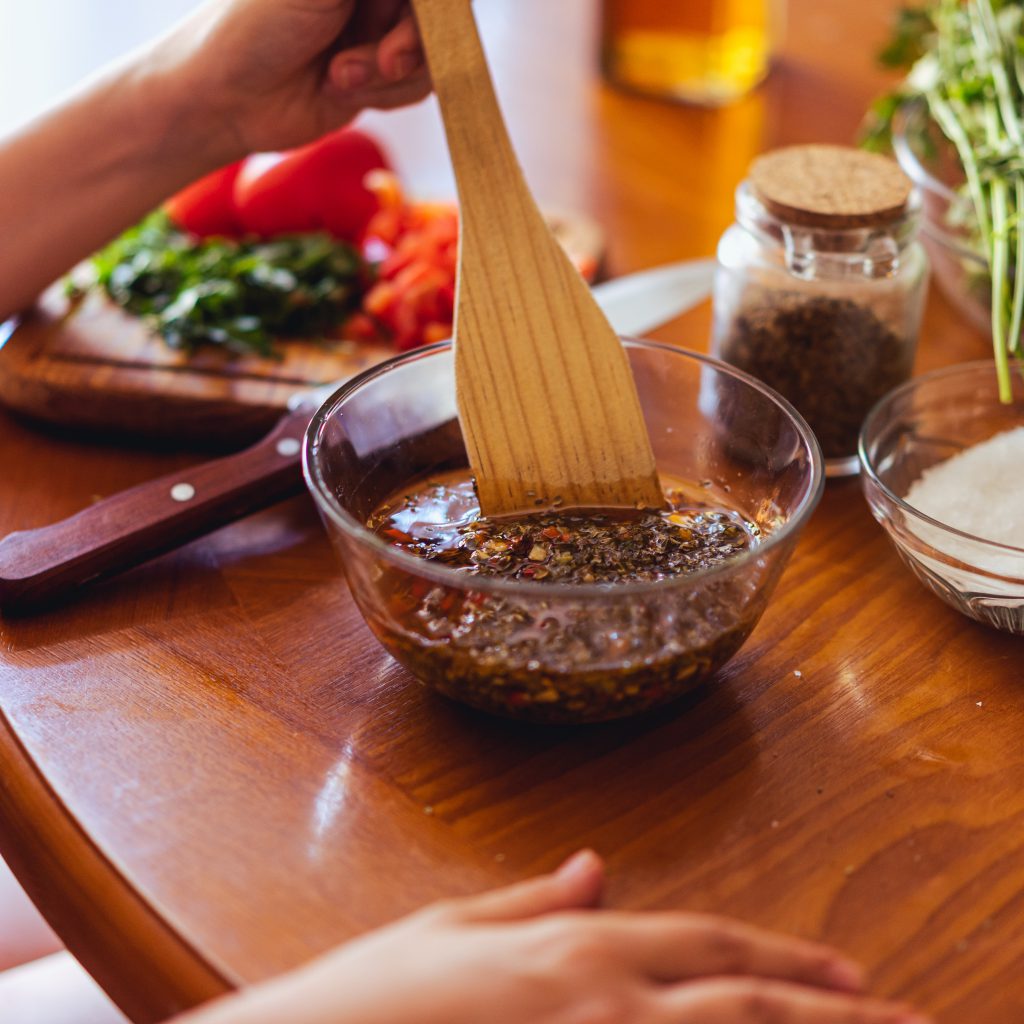
Chiu Chow, Chaozhou, or Teochew chili oil is a condiment that the Chinese folk like to drizzle on almost everything from dumplings to steak. Have you ever wondered how East Asian restaurants are able to pull off that incredibly sweet, spicy, and savory chili sauce? Let us tell you the golden goose egg secret: umami!
Authentic Chinese hot sauces are much less pungent and vinegary than other hot sauces around the world. What makes chiu chow chili sauce stand out is that it’s packed with umami flavor from its gigantic amount of garlic and soy sauce. So if you ever want to spice up a Chinese dish, or any dish really, with some extra spice, sweetness and umami, this will be your new go-to condiment.
Prep time: 30 mins
Yield: 2 ½ cups
Ingredients:
- 15 fresh Sichuan peppers
- 2 cloves of garlic
- 1 cup neutral oil (canola, peanut, grapeseed oil, or refined olive oil)
- 1 cup sichuan chili flakes
- 1 tsp sugar
- 2 tbsp dark soy sauce
- 2 tsp salt
Preparation:
- Put the garlic cloves in a natural stone mortar and pestle and smash until you get a paste.
- Add ½ cup of neutral oil into a small saucepan and heat it up. Add the garlic paste to the hot oil and cook over low heat until it turns golden yellow, then take the pan off the heat. Be careful not to fry the garlic to a crisp.
- Chop the fresh sichuan peppers using a pair of gloves and place them into a mortar and pestle. Add 2 teaspoons of salt and mash until the peppers are broken down. Don’t worry about getting a smooth paste, you can leave it as chunky as you desire.
- Add the salted chili peppers into the saucepan with garlic oil and leave to fry over medium heat for about 5 minutes.
- Add the remaining oil into the saucepan, followed by sugar and chili flakes. Stir to mix everything evenly and add 2 tbsp of dark soy sauce.
- Transfer the chiu chow oil into a clean, dry jar and store it in the refrigerator for up to 2 months.
Bland Foods Don’t Need to Be Bland!
Recipes for sweet chili sauces vary from pepper to pepper and region to region. But in general, a sweet chili sauce can be a cheat code in many dishes, from stir fries to plates of pasta or even as a marinade. Since the sauce is already thick, you don’t need to cook it down or mess around with cornstarch. They can be salty, vinegary, garlicky, fruity, and sweet; and when you do cook them down, they bring out a flavorful caramel vibe thanks to the added sugar.


